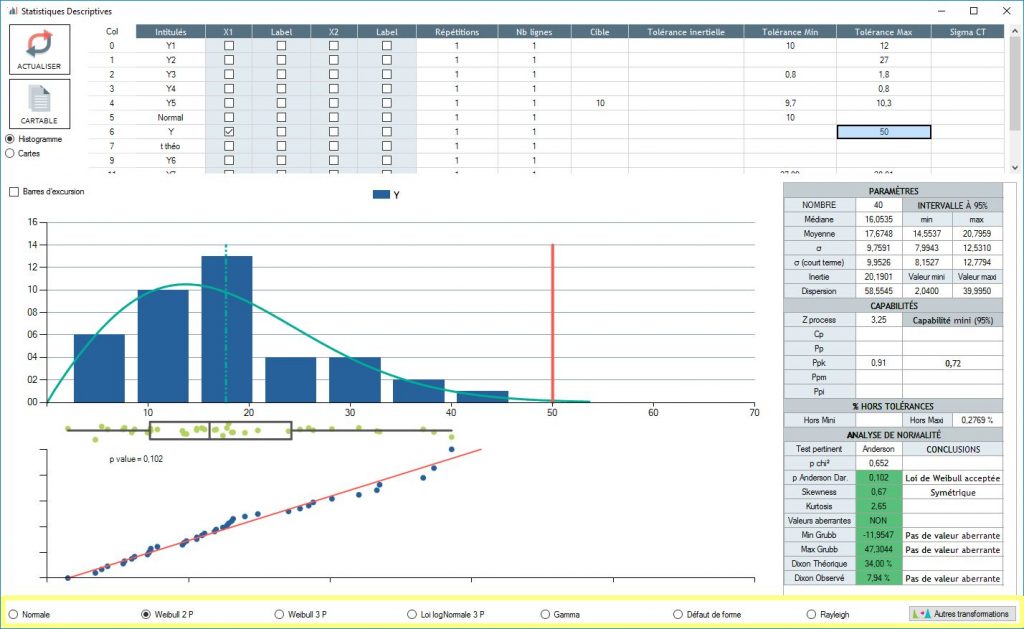User Guide
What to do in case of non-normality
The central limit theorem tells us:
Any system resulting from the sum of many factors independent of each other and having an equivalent order of magnitude generates a distribution law that tends towards a normal distribution.
However, we can also apply reasoning in the opposite way. If we observe a distribution that is not normal while the theorem hypotheses are not valid:
Case 1:
the system is not the result from the sum of many factors: This is perhaps the product of many factors or something else. In this case, the distribution law could be different and a transformation, in general, (taking the example of the log of the result) would allow us to find a normal distribution.
Case 2:
The factors are not independent of one another:???
Case 3:
The factors do not have an equivalent order of magnitude:
- One factor dominates the others. In this case, it is recommended to find the factor in question as it can only generate a substantial variability source.
- An abnormal value pollutes the distribution. In this case, it is recommended to find the cause of the abnormal value and to eliminate it if the cause can be explained.
In these two particular cases only one corresponding distribution for the observed variability needs to be found. Actually, this distribution law will not be repeatable in time as it is due to only one parameter and it will therefore have no predictive properties.
If the origin of the abnormality is due to case 1 it is consequently advisable to find the corresponding distribution, in particular if we want to predict the percentage of values outside of tolerance. For this, you can use the distribution suggestions located at the bottom of the window to see if one of the distributions will take into account the observed data.

If none of these distributions is appropriate you can use the “other transformations” button.transformations ».